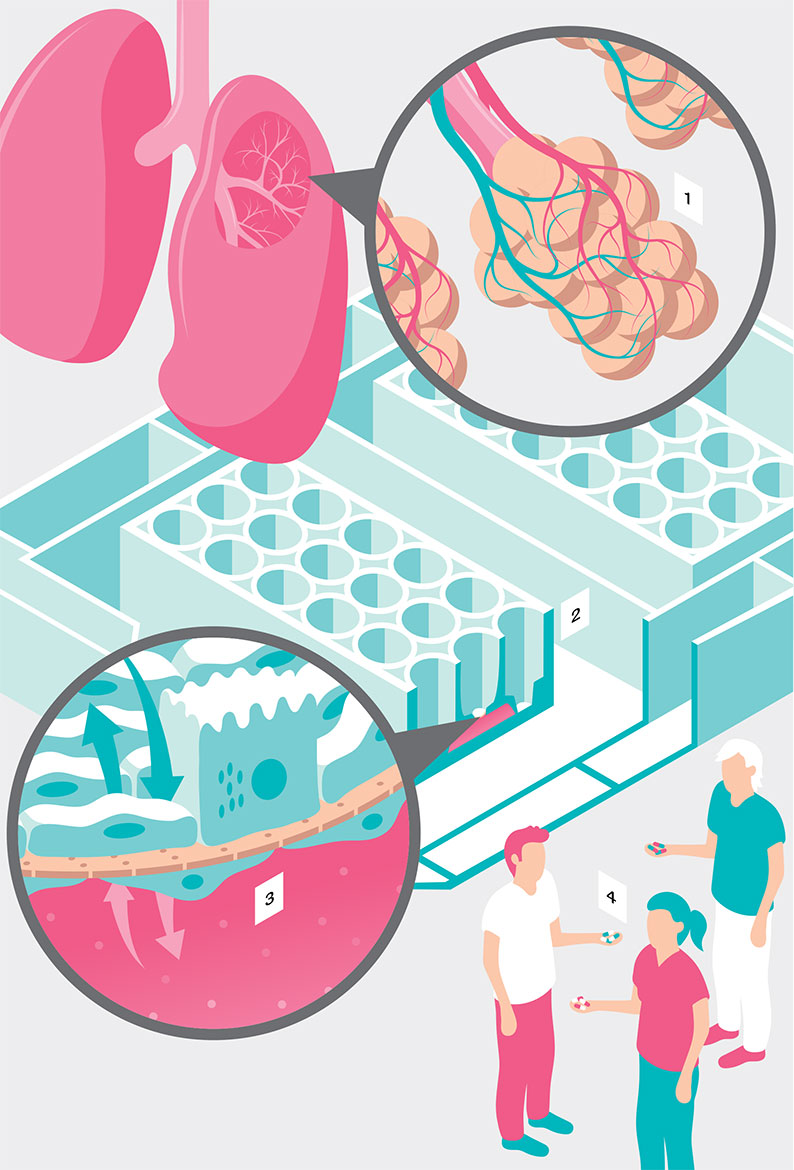How it works
Great expectations for miniature lungs
Today, therapies and drugs are tested on animals and cultured cells. But another possibility is to replicate human organs on chips.
Today, therapies and drugs are tested on animals and cultured cells. But another possibility is to replicate human organs on chips.

Illustration: ikonaut
4 — The vision for the future: Personalised medicine
This lung chip can be used in bio labs both for drug development and for basic research. In future, the researchers envisage being able to customise several different organs individually on a single chip. They hope that these ‘humans on a chip’ will in future enable them to develop drugs with far fewer animal tests, and that optimal compounds can be chosen for individual people – in other words, to create personalised medicine.
3 — The procedure: Simulating the function of the lungs
On the chip is a porous and flexible membrane. Above and below it, there is a layer of human lung cells made of residual material from lung operations. An artificial diaphragm ensures that the tissue contracts and expands, just as it does when we breathe. Between the diaphragm and the membrane, there is a chamber with a nutrient solution that mimics human blood. Liquid agents can be pipetted into the chip to treat tumours, or it can be exposed to atomised aerosols.
2 — The solution: A chip with lung cells
The team at Alveolix, a spin-off of the ARTORG Center at the University of Bern, has now developed a lung chip that can simulate conditions in the lungs, including the motion of breathing. The cells are cultivated on the chip and behave just as they would in the human body. This allows researchers to test the effects and side-effects of drugs and aerosols on lung tissue.
1 — The problem: The lung is a complex organ
Researchers rely on either animal experiments or tests in petri dishes when developing drugs to treat lung diseases. Both options have disadvantages when it comes to understanding the function of a breathing human lung with its approximately 300 million air sacs.
